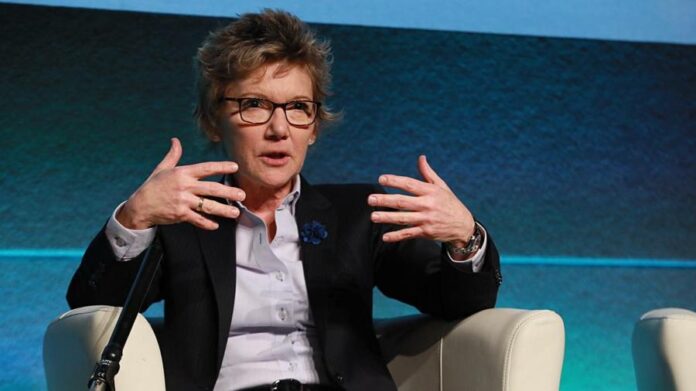The US central bank is entering a new phase of policy tightening that will be harder to navigate, a top official has warned, as pressure builds on the Federal Reserve to temper what has become one of its most aggressive campaigns to raise interest rates in decades.
“This next phase of policymaking is much more difficult, because you have to be mindful of so many things,” Mary Daly, president of the San Francisco branch told the Financial Times.
“You have to be mindful of the cumulative tightening that’s already in the system. You have to be mindful of the lags in monetary policy. You have to be mindful of the risks that are all throughout the global economy and the tremendous uncertainty that we have even about what the evolution of inflation is going to be.”
Daly is among a growing cohort of officials to back a slower pace of rate rises. This is partly due to the tightening already in train, but also because it takes months for the full effect of policy adjustments to be felt and even more time to show up in the economic data. Interest-rate sensitive sectors like housing are already teetering under the weight of higher borrowing costs, but broader price pressures remain elevated and the labour market tight.
In less than a year, the Fed has raised the federal funds rate by 3.75 percentage points, relying on swingeing 0.75 percentage point increases to make up ground against inflation that has consistently surprised in its intensity.
With the benchmark policy rate now hovering at a level considered to be “moderately restrictive” on economic activity — between 3.75 per cent and 4 per cent — Daly said the challenge the Fed now faces is determining what level of rates will be “sufficiently restrictive” to bring inflation back down to the central bank’s 2 per cent target.
“If I can do one thing for the public, I would say: stop thinking about pace and start thinking about level.”
Jay Powell, the chair, said this month that the Fed could moderate the pace of tightening as soon as the next gathering in December, but stubbornly-high inflation likely means the level at which the fed funds rate tops out will be higher than previously expected. Daly said a “terminal” rate of “at least 5 [per cent] is probably likely”.
Of equal importance is how long to keep the policy rate at a sufficiently restrictive level. “If I can hold it there [at an elevated level] for a year and really think that inflation is coming down, then that’s probably a reasonable rate to stop at,” the San Francisco chief said. “Overnight to 2 per cent is not my goal . . . but we can’t be so patient that inflation continues to erode the real purchasing power of Americans.”
Moving too slowly to root out inflation also risks expectations of future inflation becoming unmoored to a degree that necessitates the Fed taking more stringent action, warned Daly, who maintains the Fed will be able to avoid job losses akin to a “severe recession”.
Citing sweeping lay-offs at technology companies, which have included Meta, Stripe and Lyft, she argued that the “rebalancing” there appeared specific to the tech sector as opposed to a sign of something more broad-based. “They were very excited about the growth rates they saw in the pandemic and they hired as if those growth rates would go forever, and then those growth rates came back down to more traditional levels.”
Beyond economic pain, another concern is financial distress that forces the Fed to intervene even as it ploughs ahead with its efforts to tackle inflation — something the Bank of England was recently forced to do after the UK’s government bond market seized up. The lesson there, according to Daly, is that drawing distinctions between monetary and financial stability tools “can be done, but it makes for some very challenging communications”.
Asked about the turmoil that has gripped cryptocurrencies, Daly said the central bank is paying attention to where “cross-contaminations” can emerge between companies and retail and institutional investors, but right now does not see a “big risk” to financial stability, with people continuing to reduce their exposure.
“Each time that this happens, hopefully the impact on the general financial system and retail and wholesale investors will be smaller.”






